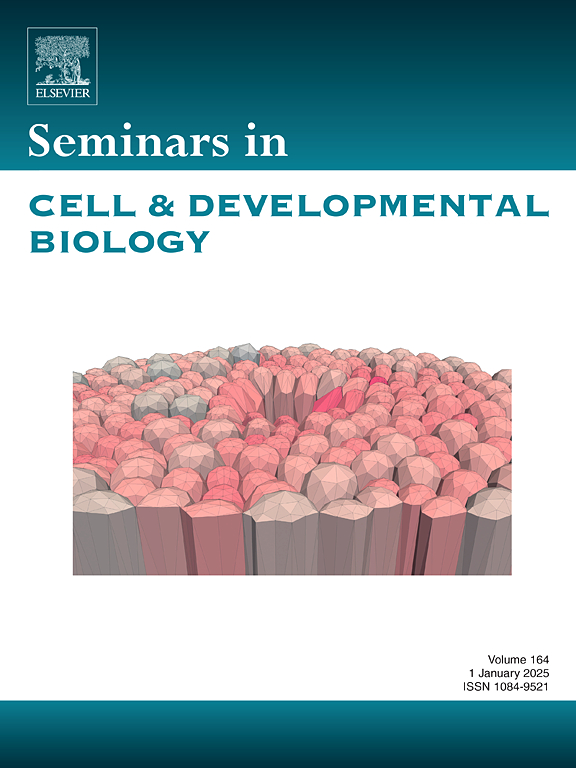跨尺度的集体细胞迁移:系统视角
IF 6
2区 生物学
Q1 CELL BIOLOGY
引用次数: 0
摘要
集体细胞迁移是一个关键的组织形成过程,对发育、伤口愈合和癌症侵袭至关重要。在集体细胞迁移过程中,引导信号的感知、整合、转导和传播以及由此产生的集体细胞反应可以发生在从分子到细胞再到超细胞的几个不同长度尺度上。此外,我们已经意识到,在迁移过程中,细胞与环境的关系是双向的,细胞不仅接受来自环境的引导线索,而且通过它们的迁移行为动态地重塑环境。这种内部(即细胞内)和外部(即细胞-细胞和细胞-环境)相互作用的复杂相互作用使得预测细胞群的紧急输出行为具有挑战性。在这里,我们提出了一个结合跨学科实验和理论方法的框架,以弥合复杂环境中集体细胞迁移过程中分子水平机制和组织水平现象之间的差距。我们将回顾最近在体外和体内迁移模型上的工作,这些模型成功地采用了其中一些方法来确定解释稳健可调迁移系统的投入-产出关系的一般原则。通过结合体外和体内观察,我们将开发出更全面的模型,研究生物体中集体细胞迁移是如何协调的,这也将为未来在组织工程和疾病治疗中更有效的应用铺平道路。本文章由计算机程序翻译,如有差异,请以英文原文为准。
Collective cell migration across scales: A systems perspective
Collective cell migration is a key tissue shaping process fundamental to development, wound healing and cancer invasion. The sensing, integration, transduction and propagation of guidance signals and the resulting generation of collective cell responses during collective cell migration can occur at several different length scales from molecular to cellular to supracellular. Furthermore, we have become aware that the cell-environment relationship during migration is bi-directional, where cells not only receive guidance cues from the environment, but also dynamically remodel the environment via their migratory behaviours. Such complex interplay of internal (i.e. intracellular) and external (i.e. cell-cell and cell-environment) interactions makes predicting the emergent output behaviours of cell groups challenging. Here, we propose a framework that combines interdisciplinary experimental and theoretical approaches to bridge the gap between molecular-level mechanisms and tissue-level phenomena during collective cell migration in complex environments. We will review recent works on both in vitro and in vivo migratory models that successfully employ some of these approaches to identify general principles explaining the input-output relationships of robustly tuneable migratory systems. By integrating in vitro with in vivo observations, we will develop more comprehensive models of how collective cell migration is orchestrated in living organisms, which will also pave the way for more effective applications in tissue engineering and disease therapeutics in the future.
求助全文
通过发布文献求助,成功后即可免费获取论文全文。
去求助
来源期刊
CiteScore
15.10
自引率
1.40%
发文量
310
审稿时长
9.1 weeks
期刊介绍:
Seminars in Cell and Developmental Biology is a review journal dedicated to keeping scientists informed of developments in the field of molecular cell and developmental biology, on a topic by topic basis. Each issue is thematic in approach, devoted to an important topic of interest to cell and developmental biologists, focusing on the latest advances and their specific implications.
The aim of each issue is to provide a coordinated, readable, and lively review of a selected area, published rapidly to ensure currency.

 求助内容:
求助内容: 应助结果提醒方式:
应助结果提醒方式:


